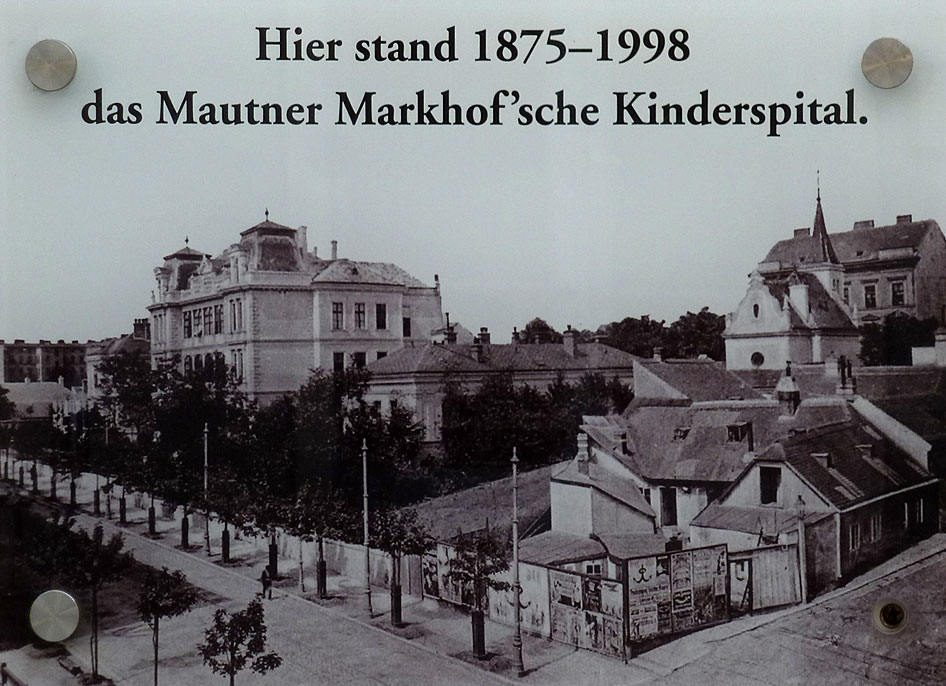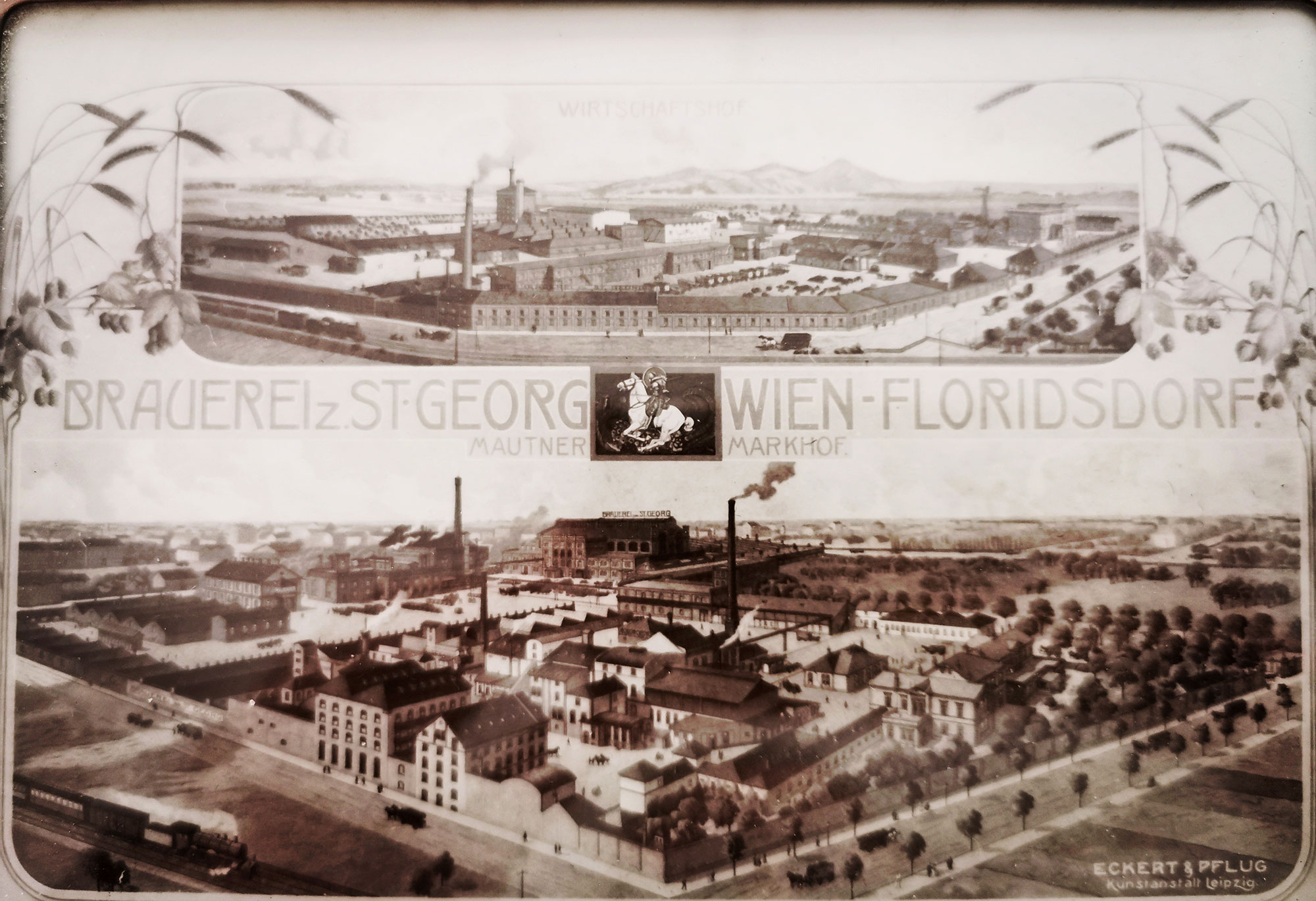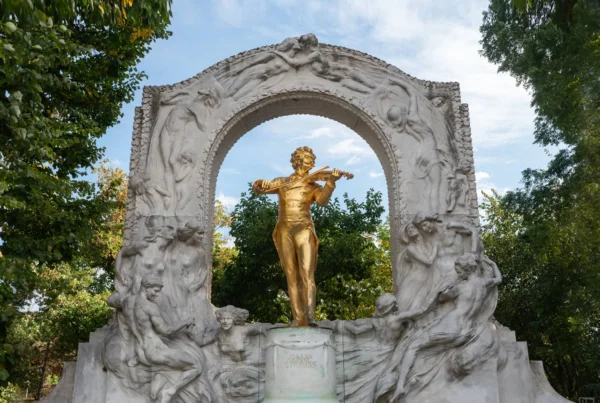The historian Johannes Hradecky highlights three unique exhibitions on “MAUTNER MARKHOF: From Biedermeier to the 21st century”. These exhibitions are a tribute to this well-known industrial family who were the forerunners of the industrial revolution in Austria. Through their social engagement they gave back to those working for them and the wider public, making them the industrialists of and for the people.
Johannes Hradecky, 12 October 2021
The Exhibitions
This fall, three exhibitions in Vienna are focusing on the Mautner Markhof family and their industrial activities, which spanned two centuries and survived the fall of the Austro-Hungarian Empire and two World Wars. The exhibitions are currently taking place at three locations: the District Museums for Landstrasse, Simmering and Floridsdorf located, respectively, in the third, eleventh and twenty-first districts of Vienna. These were the districts where the Mautner Markhofs had built their industrial facilities and which to this day remain connected to the family in a very special way.
The history of the family is a history of the industrial revolution during the Austro-Hungarian Empire and a testament to a family who, while achieving success and wealth, never forgot its workers and employees who contributed to this success. Through their unique and extensive social engagement, the Mautner Markhofs were the industrialists of the people.
Each of these museums focusses on a certain aspect of the history of the family and their industries/companies. For 180 years, there have been and still are companies in Vienna which bear the family’s name and produce mustard, beer, yeast, spirits, vinegar and fruit syrup at various locations: production in the Landstrasse started in 1841, in Floridsdorf in 1864, and in 1861 in Simmering where Mautner Markhof products are still being produced.
The exhibition in the Simmering District Museum focuses on the Simmering companies and the products produced at this location throughout the family’s history, namely, yeast, alcohol, spirits, vinegar, mustard and fruit syrup. The production process as well as the brands are illuminated in detail by means of numerous historical objects, photos, documents and advertising materials from all eras. The entrepreneurial family, corporate culture and the ever-loyal employees are also important themes of the exhibition, which also includes anecdotes. The visually enjoyable journey through the company’s history ends in the present with an overview of the development and use of the “Mautner Grounds” from the Middle Ages to the present day, making this exhibition very attractive and informative.
 The exhibition on the Landstrasse focuses on the charitable activities of the Mautner Markhofs in this district centered around the Mautner Markhof Children’s Hospital, formerly located on the Landstrasse – one of Vienna’s longest and busiest roads running from the center of the city outwards towards nearly Schwechat in Lower Austria.
The exhibition on the Landstrasse focuses on the charitable activities of the Mautner Markhofs in this district centered around the Mautner Markhof Children’s Hospital, formerly located on the Landstrasse – one of Vienna’s longest and busiest roads running from the center of the city outwards towards nearly Schwechat in Lower Austria.
The exhibition on the Landstrasse also displays some of the most treasured artifacts commissioned by the family. The skillful workmanship of these priceless artworks was meant to display the wealth and taste of the family.
The final part of the exhibition trilogy is in the District Museum of Florisdorf. The District Museum itself is housed in the Mautner Schlössl or Mautner Palace which was donated to the city of Vienna after WWII. This exhibition focuses on the history of the family in Floridsdorf and highlights the strong connection of the family to their employees and workers in the factories.
Taken together, these three excellent exhibitions are a tribute to the industrial and social achievements of the Mautner Markhof family and what they stood for. They were the industrialists of the people, whose success story lives on in a city governed by Social Democrats for over 100 years.
The Family
Adolf Ignaz Mautner von Markhof, the founder of the dynasty, originally came from Bohemia. His family had been in the brewing business since 1690. Upon arriving in Vienna, the center of the Austro-Hungarian Empire, he started his own brewery in St. Marx in 1841. His son Georg I. Heinrich Mautner von Markhof opened another brewery in Floridsdorf in 1872, which surpassed the success of his father’s brewery and ultimately merged with it. Through innovation and growth, the family corporation grew to become one of the highest valued companies in the Austro-Hungarian Empire with a market share of over 35% in the respective industries, over 3000 employees and locations throughout the Empire, including Italy, Poland, Vienna and Hungary. The Mautner Markhof family was ennobled in 1872.
Key to their success was the invention by Adolf Ignaz and his son-in-law, Julius von Reininghaus, of a process for the industrial production of yeast, which won an award in 1850 and made the Mautner’s world famous. They had introduced bottom-fermented beer and in so doing the Mautner Markhofs also helped create Vienna’s famous Kaisersemmel – a popular round bun, equivalent to the French croissant for Austrians. Before the First World War, the brewery through growth and mergers had become one of the largest in the world.
From 1861, yeast, spirits and brandy were also produced on the large Rosenhof site between Mautner Markhof-Gasse and Simmeringer Hauptstraße in Vienna’s third district. Today this area is part of what is known as the “Mautner Grounds”. Descendants of Adolf Ignaz Mautner von Markhof built a vinegar factory in 1903 in today’s Mautner Markhof-Gasse 39 – 41, where mustard has also been produced since 1921. This year marks the 100th year anniversary of mustard production at this location and counting.
Among the Mautner’s most important charitable works was the Mautner Markhof Children’s Hospital, established in 1875 and financed by Adolf Ignaz and his ten children through one of his charitable foundations. The hospital was especially built to treat orphaned children without regard to their religion. It was built to the latest standards with at first 50 fully-equipped hospital beds and started operation on 1.7.1875. A church, the St. Elisabeth Chapel, was built on the grounds of the hospital. This Chapel is still in existence. Both the Hospital and the Chapel were donated to the City of Vienna in 1924.
After the death of Adolf Ignaz, the family continued to support the hospital and his charitable foundations, donating a scarlet fever and diphtheria pavilion, an X-ray machine in 1902 and an emergency pavilion in 1910. By the year 1924 the hospital had over 200 beds.
The Floridsdorf exhibition displays an article published in the Floridsdorf Local Journal entitled “Mautner Markhof for the Poor”. This article, published on Christmas eve of 1925 during the depression, is a tribute to the social engagement and programs of the Mautner Markhofs. These industrialists cared for those working for them throughout the war and throughout the depression through pension plans, health care, as well as foundations to care for widows and orphans. They also provided apartments and food for their workers and their children. The Mautner Markhofs did this long before labor unions existed and long before they were required by law to do so.
◊ ◊ ◊ ◊ ◊
The Exhibitions which have the common title: “MAUTNER MARKHOF: From Biedermeier to the 21st century” runs at the District Museum Simmering until 29.7.2022. This museum is located at Enkplatz 2 in 1110 Vienna, opening hours are Friday 2 to 5 p.m. and every 2nd and 4th Sunday of the month from 10 to 12 a.m.
The exhibition at the District Museum Landstrasse runs until 9.3.2022. Located at Sechskrügelgasse in 1030 Vienna, it is open to the public on Wednesdays from 4 to 6 p.m. and Sundays from 10 to 12 a.m.
The exhibition at the District Museum Floridsdorf runs until 6.3.2022. This museum is located at Prager Strasse 33 in Vienna’s 21st district. Opening hours are Tuesday’s 3 to 5 p.m. and Sundays from 10 to 12 a.m.
In keeping with the Mautner tradition, admission is free.





